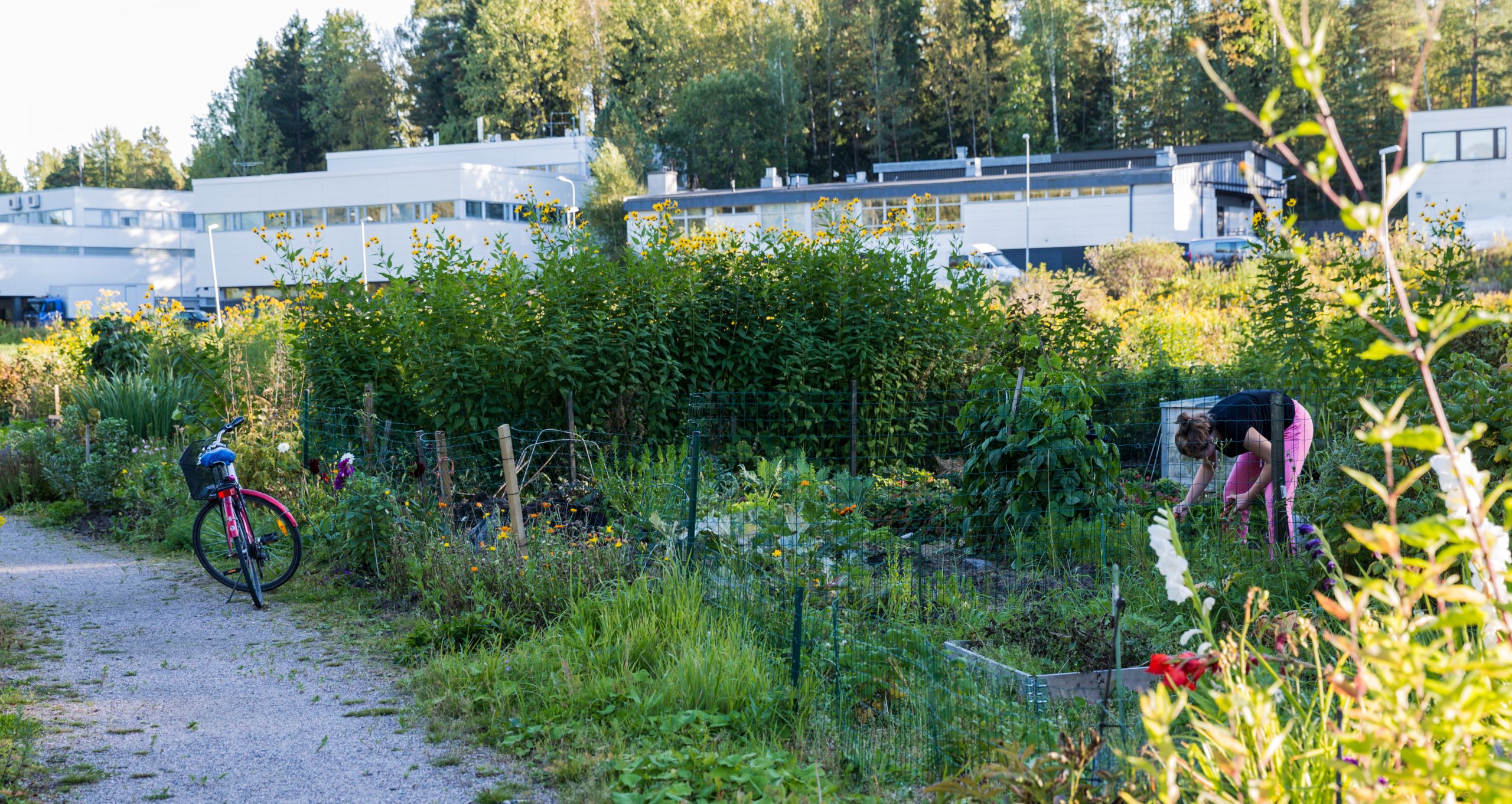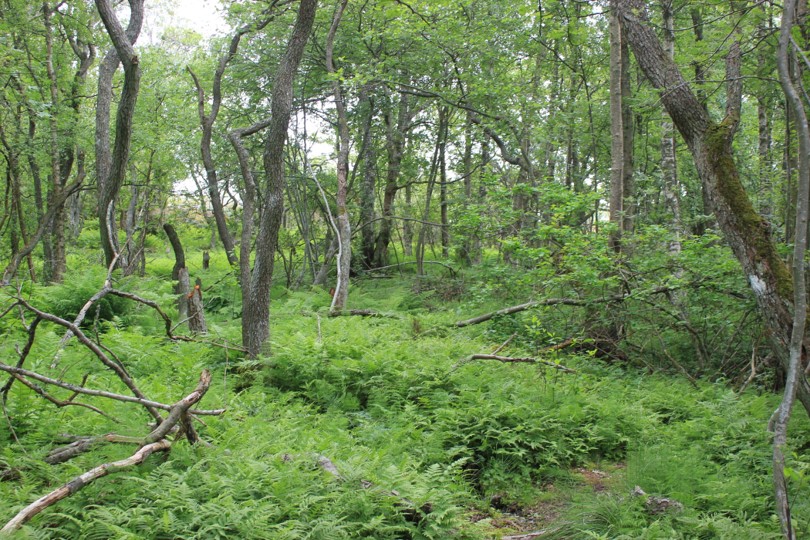Oriol García-Antúnez & Jussi Lampinen
An ongoing survey directed to everyone living in Helsinki welcomes responses regarding your important green spaces and attitudes towards advancing carbon sequestration and storage in cities. Take the survey at mpt.link/hiiliviisas

Allotment garden in Aino Ackté Park, Pohjois-Haaga, Helsinki. Photograph: Ninaras, CC BY 4.0
By 2035, the city of Helsinki has the ambitious goal of becoming one of the first carbon-neutral cities in Europe. For that to happen, not only will the city need to cut emissions, but to also increase carbon sequestration and storage within the city borders. Do you think urban vegetation could be a possible way of achieving this? Urban green spaces are among the avenues towards carbon-neutrality that both the European Commision and the city of Helsinki have considered. Indeed, in both policy and research, the design and management of urban green spaces are suggested to be a cost-effective climate change mitigation strategy.
However, while most of us know from school that plants turn carbon dioxide into biomass that can enter the soil via litter decay, this seemingly simple idea gets more complicated when elements of design and management of green spaces are included in the carbon equation. The way in which different vegetation types, design parameters and management regimes affect the flows and storages of carbon in urban green spaces is what CO-CARBON, a project funded by the Strategic Research Council (SRC) operating in connection with the Finnish Academy, is trying to find out.
A further complication is that urban residents use green spaces in many ways. A 15-year-old teen does not expect the same from a park as, for example, a family with children or a retired couple. To advance carbon sequestration and storage in green spaces we will need to change the way in which we design and manage them. This will inevitably bear consequences not only regarding the physical appearance of green spaces, but also the social contexts and valuation through which residents view them. This is where working package 3, Envisioning just urban green infrastructure, of CO-CARBON, and a recently published survey directed at residents of Helsinki, come into play.
In WP 3 of CO-CARBON, we focus on questions such as which of the current social values associated with green spaces will be lost, and which new ones will emerge from transformations aiming to advance carbon sequestration and storage? In addition, we aim to identify whose values and recreation experiences will be affected, so as to elicit possible injustices in the way costs and benefits of urban green space transformations are allocated among city residents. We believe it is essential to hear the voices of all user groups, and especially of those who are generally underrepresented or even excluded from decision-making processes, such as youth.

Let’s say we want to relax the management of forest remnants to promote carbon sequestration and storage and biodiversity. While for some, this forest remnant could be perceived as lush, wild and pleasant, others could find it messy, unappealing, dangerous and even inaccessible. This kind of variation in how green spaces efficient in CSS or high in biodiversity are valued by urban residents with different socio-economic backgrounds is among the core themes of an ongoing survey in Helsinki. Photograph: Julian Nyča, CC BY-SA 4.0
Social acceptability of new policies aiming to advance carbon-smartness in urban green spaces is also a central piece of our WP and the new Helsinki-scale survey. For example, we seek to explore how acceptability varies according to the spatial scale in which transformations are targeted, and how residents prioritize the different co-benefits we get from urban green spaces. Additionally, we are delving into public understanding of the role of urban green infrastructure in climate change mitigation. We are interested in discovering how people understand carbon sequestration and storage in the context of urban green infrastructure, and where in the city they locate these phenomena spatially. Literacy on ecological processes is the first step towards building public capabilities for informed individual acceptability judgments and behaviors, and it is a key prerequisite for a happy, resilient and functional society.
Thus, if you live in Helsinki, please help us co-create just and sustainable urban green spaces, and take our 20-minute survey at mpt.link/hiiliviisas
The survey welcomes responses in English, Finnish or Swedish until mid-October 2021. Thank you for your effort!
About the authors
Oriol is as an environmental biologist and nature manager passionate about the interactions between humans and the physical environment. Having recently defended his master thesis at the University of Copenhagen about barriers hindering wildlife friendly gardening, his research interests revolve around social barriers and levers of sustainable transitions in semi-natural and urban socio-ecological systems.
Jussi is a conservation ecologist with a broad interest in biodiversity conservation, human-nature relationships and navigating these two towards sustainable futures. His research topics include the conservation problematics of grasslands and their species, urban floristics and, more recently, urban green spaces from a social-ecological and environmental justice point of view.
Both of the authors have been working for CO-CARBON since early 2021.